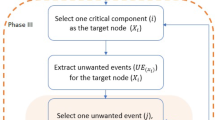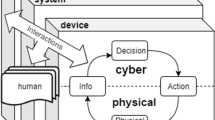Abstract
Cyber-physical space is a spatial environment that integrates the cyber world and the physical world, aiming to provide an intelligent environment for users to conduct their day-to-day activities. The interplay between the cyber space and physical space proposes specific security requirements that are not captured by traditional access control frameworks. On one hand, the security of the physical space and the cyber space should be both concerned in the cyber-physical space. On the other hand, the bad results caused by failure in providing secure policy enforcement may directly affect the controlled physical world. In this paper, we propose an effective access control framework for the cyber-physical space. Firstly, a topology-aware access control (TAAC) model is proposed. It can express the cyber access control, the physical access control, and the interaction access control simultaneously. Secondly, a risk assessment approach is proposed for the policy enforcement phase. It is used to evaluate the user behavior and ensures that the suspicious behaviors executed by authorized users can be handled correctly. Thirdly, we propose a role activation algorithm to ensure that the objects are accessed only by legal and honest users. Finally, we evaluate our approach by using an illustrative example and the performance analysis. The results demonstrate the feasibility of our approach.
Similar content being viewed by others
Explore related subjects
Discover the latest articles and news from researchers in related subjects, suggested using machine learning.References
Rajkumar R, Lee I, Sha L, Stankovic J. Cyber-physical systems: the next computing revolution. In: Proceedings of IEEE International Conference on Design Automation Conference. 2010, 731–736
Tsigkanos C, Kehrer T, Ghezzi C. Architecting dynamic cyber-physical spaces. Computing, 2016, 98(10): 1011–1040
Tsigkanos C, Pasquale L, Ghezzi C, Nuseibeh B. On the interplay between cyber and physical spaces for adaptive security. IEEE Transactions on Dependable & Secure Computing, 2018, 15(3): 466–480
Ray I, Ray I. Access control challenges for cyber-physical systems. In: Proceedings of NSF Workshop on Cyber-Physical Systems. 2009
Abdunabi R, Al-Lail M, Ray I, France R B. Specification, validation, and enforcement of a generalized spatio-temporal role-based access control model. IEEE Systems Journal, 2013, 7(3): 501–515
Kirkpatrick M S, Damiani M L, Bertino E. Prox-RBAC: a proximity-based spatially aware RBAC. In: Proceedings of ACM SIGSPATIAL International Conference on Advances in Geographic Information Systems. 2011, 339–348
Toahchoodee M, Ray I. On the formalization and analysis of a spatiotemporal role-based access control model. Journal of Computer Security, 2011, 19(3): 399–452
Jin X, Sandhu R, Krishnan R. RABAC: role-centric attribute-based access control. In: Proceedings of International Conference on Mathematical Methods, Models and Architectures for Computer Network Security: Computer Network Security. 2012, 84–96
Unal D, Caglayan M U. A formal role-based access control model for security policies in multi-domain mobile networks. Computer Networks, 2013, 57(1): 330–350
Skandhakumar N, Salim F, Reid J, Dawson E. Physical access control administration using building information models. In: Proceedings of International Conference on Cyberspace Safety and Security. 2012, 236–250
Geepalla E, Bordbar B, Du X. Spatio-temporal role based access control for physical access control systems. In: Proceedings of IEEE International Conference on Emerging Security Technologies. 2013, 39–42
Chen D, Chang G, Sun D, Jia J, Wang X. Modeling access control for cyber-physical systems using reputation. Computers & Electrical Engineering, 2012, 38(5): 1088–1101
Venkatasubramanian K K, Mukherjee T, Gupta S K S. CAAC — an adaptive and proactive access control approach for emergencies in smart infrastructures. ACM Transactions on Autonomous and Adaptive Systems, 2014, 8(4): 1–18
Wu G, Lu D, Xia F, Yao L. A fault-tolerant emergency-aware access control scheme for cyber-physical systems. Information Technology & Control, 2011, 40(1): 29–40
Akhuseyinoglu NB, Joshi J. Arisk-aware access control framework for cyber-physical systems. In: Proceedings of IEEE International Conference on Collaboration and Internet Computing. 2017, 349–358
Baracaldo N, Joshi J. An adaptive risk management and access control framework to mitigate insider threats. Computers & Security, 2013, 39(4): 237–254
Baracaldo N, Palanisamy B, Joshi J. G-SIR: an insider attack resilient geo-social access control framework. IEEE Transactions on Dependable & Secure Computing, 2017, 16: 84–98
Tsigkanos C, Pasquale L, Ghezzi C, Nuseibeh B. Ariadne: topology aware adaptive security for cyber-physical systems. In: Proceedings of IEEE International Conference on Software Engineering. 2015, 729–732
Cao Y, Huang Z, Ke C, Xie J, Wang J. A topology-aware access control model for collaborative cyber-physical spaces: specification and verification. Computers& Security, 2019
Kuhn D R, Coyne E J, Weil T R. Adding attributes to role-based access control. Computer, 2010, 43(6): 79–81
Ultra J D, Pancho-Festin S. A simple model of separation of duty for access control models. Computers & Security, 2017, 68: 69–80
Cao Y, Huang Z, Kan S, Peng H, Ke C. Location-constrained access control model and verification methods. Journal of Computer Research and Development, 2018, 55(8): 1809–1825
Cao Y, Huang Z, Kan S, Fan D, Yang Y. Specification and verification of a topology-aware access control model for cyber-physical spaces. Tsinghua Science and Technology, 2019, 24(5): 497–519
Chakraborty S, Ray I. TrustBAC: integrating trust relationships into the RBAC model for access control in open systems. In: Proceedings of ACM Symposium on Access Control Models and Technologies. 2006, 49–58
Baracaldo N, Joshi J. Beyond accountability: using obligations to reduce risk exposure and deter insider attacks. In: Proceedings of ACM Symposium on Access Control Models and Technologies. 2013, 213–224
Bijon K Z, Krishnan R, Sandhu R. A framework for risk-aware role based access control. In: Proceedings of IEEE Communications and Network Security. 2013, 462–469
Chen L, Crampton J. Risk-aware role-based access control. In: Proceedings of International Conference on Security and Trust Management. 2011, 140–156
Santos D R D, Marinho R, Schmitt G R, Westphall C M, Westphall C B. A framework and risk assessment approaches for risk-based access control in the cloud. Journal of Network & Computer Applications, 2016, 74: 86–97
Acknowledgements
This work was supported by the National Natural Science Foundation of China (Grant Nos. 61772270, 61602262 and 61602237), Jiangsu Natural Science Foundation of China (BK20170809), National High Technology Research and Development Program of China (2015AA015303).
Author information
Authors and Affiliations
Corresponding author
Additional information
Yan Cao is currently a PhD candidate in the department of computer sciences and technology, Nanjing University of Aeronautics and Astronautics, China. She has participated in several research projects and industrial projects about IT security. Her research interests include cyber-physical space, security and privacy, formal methods, and software engineering.
Zhiqiu Huang is currently a professor at the department of computer sciences and technology, Nanjing University of Aeronautics and Astronautics, China. He has supported several research projects of the National Natural Science Foundation of China about privacy and security. He has participated in several industrial projects working on the area of IT security. His research interests include safety and dependable software development, formal methods, security and privacy.
Yaoshen Yu is currently a PhD candidate in the department of computer sciences and technology, Nanjing University of Aeronautics and Astronautics, China. His research interests include formal methods, software engineering, safety and security.
Changbo Ke received the PhD degree in software engineering from Nanjing University of Aeronautics and Astronautics, China in 2015. He is currently a post-doctoral student in Nanjing University of Aeronautics and Astronautics and also a teacher at the colleague of computer science, Nanjing University of Posts and Telecommunications, China. His research interests include Web service, software engineering, privacy protection, and formal methods.
Zihao Wang is currently a master student at the department of computer sciences and technology, Nanjing University of Aeronautics and Astronautics, China. His research interests include security and privacy, block chain technology.
Electronic supplementary material
Rights and permissions
About this article
Cite this article
Cao, Y., Huang, Z., Yu, Y. et al. A topology and risk-aware access control framework for cyber-physical space. Front. Comput. Sci. 14, 144805 (2020). https://doi.org/10.1007/s11704-019-8454-0
Received:
Accepted:
Published:
DOI: https://doi.org/10.1007/s11704-019-8454-0




